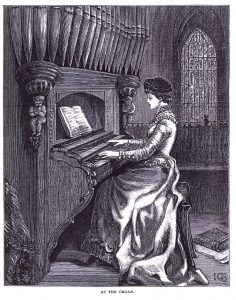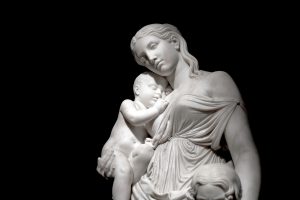Nursing and Music in The Girl’s Own Paper
Part 2 Asylum Nursing
The Girl’s Own Paper (TGOP), a popular weekly magazine published in London by the Religious Tract Society beginning in 1880, included information and advice about employment opportunities for young women in its issues. If replies in the Answers to Correspondents columns in the magazine offer a representative sampling of readers’ desired employments, other employments – including music – paled in comparison with readers’ visions of becoming professional nurses.
Nursing, both amateur and professional, continued to capture the attention of TGOP and its correspondents in the first decade of the twentieth century. In a twelve-part series, C.F. Picton-Gadsden’s ‘The Hospital in the Home’ [27: beginning 101] * covered basic nursing essentials that the author of ‘The Trials of an Amateur Nurse’ may have found helpful. [29: 751–52] ‘Nursing as a Profession for Girls’ [28: 4–5] and ‘The Experiences of a Private Nurse’ [28: 140–41] discussed the professional side of nursing.
Correspondents were particularly interested in asylum nursing. Why asylum nursing? Strides had been made in the last half of the nineteenth century to replace containment and coercion of patients in asylums with care and cure instead. But overcrowding of these institutions as well as little tangible evidence that the therapeutic modalities were working led to stagnation in the treatment of Britain’s insane. 1 Mrs Chapman, a former Matron of Whittingham, Leavesden and Claybury Asylums in England, wrote of the ominous increase of insanity in Britain during the last decades of the nineteenth century; in 1900 the Lunacy Commissioners, a group established by the Lunacy Act of 1845 to oversee asylums and the welfare of the mentally ill, reported that one in every three hundred of Britain’s population was a ‘registered lunatic’. 2 In 1906 the Commissioners in Lunacy reported 121,979 registered lunatics in England and Wales cared for by about 20,000 nurses and attendants, 4006 of them women. 3 Male staff members were called ‘attendants’ and female staff, ‘nurses’. 4
A reform was underway to recognize mental illness as a disease and to make care for those patients more like that given in general hospitals rather than the less than commendable care associated with Britain’s treatment of the insane. Just as the introduction of trained nurses into general hospitals in the previous century had brought a more humane approach to the care of medical patients, likewise the introduction of trained nurses into asylums could, it was hoped, do the same for the care of mental patients.
Chapman pointed to England’s recognition in the last few years of how valuable systematic training was in any profession. Ratepayers, who supported asylums, were becoming slowly aware that intellectual efficiency of all those engaged in that work would promote economic efficiency. 5 But intelligence must be coupled with experience, and Britain’s hospital-trained nurses lacked the understanding and skills needed to meet the needs of patients suffering from mental illness. 6 The Medico-Psychological Association – the professional organization of asylum medical superintendents – offered a comprehensive training program for asylum nurses beginning in 1899 to assure that they could meet their patients’ physical as well as psychological needs. 7
The ‘general desire to raise the status and qualifications of the asylum nurse’ would be advanced by careful selection of candidates, Chapman wrote, and, on the whole, women offered a better pool than men from which to select asylum nurses, in part because ‘A good moral character is the foundation upon which the successful training of the nurse rests.’ 8
When in 1901 ANXIOUS wrote TGOP asking ‘Is there any demand for asylum nurses? How could I find out where they are wanted?’, the correspondent’s question and the magazine’s reply were printed in a Question and Answer column. The demand for asylum nurses was considerable, ANXIOUS was told, but training in a good asylum that offered certification by the Medico-Psychological Association was important. Annual salary as an asylum nurse would amount only to £20 to £25, but the field offered good employment opportunities. [22: 715] In a follow-on Questions and Answers column, TGOP reassured A LOVER OF USEFUL WORK, who asked if asylum nursing, like so many other occupations, was overstocked, that vacancies did exist in that line of work. [23: 53]
Perhaps to set the record straight on training and work opportunities in asylum nursing, in 1903 Anna contributed ‘An Occupation for Girls That Is Remunerative, Interesting, and Not Over-Crowded’. Healthy women aged 18 to 30 and at least five foot three inches tall with a fair education, an aptitude for nursing, and ‘some knowledge of music and singing’, should consider working in an asylum, she said. The author appealed especially to those Christian women with a missionary spirit to ‘Take up this work, my sisters!’ to prevent unnecessary suffering. ‘When discouraged, think of Him Who cured the sick in mind as well as the sick in body, and pray that His coming be not long delayed.’ [25: 243]
Anna explained the curious musical prerequisites in ‘The Duties of an Asylum Nurse’ that appeared later in the same volume. The asylum chaplains who directed the choirs for worship services were glad to have nurses with good voices as choir members. In addition, each ward had a piano, and the patients appreciated musical nurses. But the accomplishment was not a necessity, Anna explained – perhaps to the relief of nonmusical readers – since some patients were professional musicians who sang and played exceptionally well. [25: 478]
Judging by replies in the Answers to Correspondents column, readers took Anna’s suggestion to heart. MABEL, [23: 352] A READER OF THE “GO.P.”, [24: 224], M.C. [25: 495] and ROTHA [25: 704] all asked about asylum nursing. A.K.’s inquiry about the ‘best way of getting into a private mental asylum, and at what age, with no experience’ left the editor confused. Did the correspondent mean as a patient, as a nurse, as a maid or as a pupil? His advice to apply to the Medico-Psychological Association and to consult her family physician covered all possibilities. [23: 80] Far more correspondents remained interested in general nursing, particularly in hospitals for adults and for children; a few inquired about maternity or monthly nursing, district nursing and army or navy nursing.
Because only replies, not correspondents’ questions, were printed in the Answers to Correspondence columns, we cannot know how many of these aspiring nurses achieved their dream, or whether, once in the profession, it was a dream fulfilled.
* The first number in brackets is the volume number, followed by page number(s).
Notes
- Neil Brimblecombe, ‘Asylum Nursing as a Career in the United Kingdom, 1890–1910, Journal of Advanced Nursing, 55 (September 2006): 770–71.
- Mrs Chapman, ‘Care of the Insane: I. Asylum Nursing’, American Journal of Nursing, 2 / 3 (1901): 164.
- Sarah A. Tooley, The History of Nursing in the British Empire (London: Bousfield, 1906), 260.
- Neil Brimblecombe, ‘Asylum Nursing in the UK at the End of the Victorian Era: Hill End Asylum’, Journal of Psychiatric and Mental Health Nursing, 12 (February 2005): 61.
- Chapman, 164.
- Ibid., 164–65.
- Briddlecombe, ‘Asylum Nursing in the UK’, 62; Chapman, 166–67.
- Chapman, 169.



